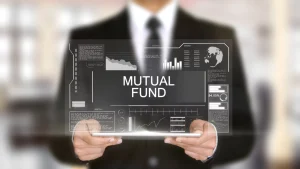
Are you a forex trader looking to try out new strategies with new tools? If so, then algorithmic trading can potentially be something for you. With an increased efficiency and accuracy in making trades, automated strategies can potentially help you make the most of your trades, provided that you understand what they do and how to set them up.
In this article, we’ll discuss how algorithmic trading can potentially give your Forex trading an edge in speed, cost savings, and better-informed decisions. We’ll explore how algorithms support different financial activities while assisting traders in succeeding in one of the most competitive markets – the Foreign Exchange (Forex) market, which is also the largest and most liquid in the world.
What is Algorithmic Trading, and Why Has It Grown in Popularity Among Traders?
Technology has opened up a whole new realm of possibilities for traders in finance. Among them is algorithmic trading – a method by which computer programs are used to make investment decisions. With the rise of high-frequency trading, algorithms have become even more critical in today’s fast-paced financial markets.
The forex trading industry, in particular, has seen a significant surge in algorithmic trading since it can potentially provide faster and more accurate trading decisions than humans. But it’s not just speed and accuracy that makes algorithmic trading so appealing to traders – it also allows for 24/7 trading, removes emotional biases, and enhances risk management. It’s no wonder why this technology has grown in popularity among traders and investors alike.
The Benefits of Automated Strategies in Forex Trading
One of the primary benefits of algorithmic trading is its ability to process vast amounts of data in seconds. It allows quicker and more informed investment decisions, ensuring traders take advantage of profitable opportunities. Additionally, automated strategies can help eliminate human error and emotional biases that often lead to poor decision-making.
Algorithmic trading also removes the need for traders to constantly monitor the market, giving them more time to focus on other essential aspects of their trading strategy. It can also lead to cost savings, as traders no longer need to pay for expensive charting platforms or costly financial advisors.
Moreover, algorithmic trading allows for better risk management by setting specific parameters and rules for trade executions. It helps limit losses and can potentially increase profits in the long run. Overall, automated strategies provide traders a competitive edge in the fast-paced world of forex trading.
Simple Steps to Get Started with Algorithmic Trading
The idea of using computer programs to make investment decisions may seem intimidating, but in reality, getting started with algorithmic trading is quite simple. The first step is to choose a suitable algorithmic trading platform and familiarise yourself with its features and functionalities. Next, it’s essential to perform thorough research on the markets you wish to trade in and develop a solid trading strategy. It will help determine which algorithmic trading tools and indicators to achieve your desired results.
It’s also crucial to test and fine-tune your strategy before using it in live trading. Most algorithmic trading platforms offer backtesting capabilities, allowing traders to see how their strategy would have performed in past market conditions. It can help identify potential flaws and improve overall performance. Finally, it’s essential to continuously monitor and adjust your automated strategies as market conditions change. It will help ensure their effectiveness and profitability in the long run.
Different Types of Algorithmic Trading Strategies & Their Advantages
There are various types of algorithmic trading strategies that traders can choose from to suit their specific trading needs. Some popular strategies include trend following, mean reversion, and arbitrage. Trend-following strategies use technical indicators such as moving averages or Relative Strength Index (RSI) to identify and capitalise on market trends. These strategies work well in markets with directional solid movements and can help traders catch profitable trends.
Mean reversion strategies, on the other hand, aim to take advantage of market fluctuations by buying low and selling high. These strategies are based on the belief that prices will eventually revert to their mean over time. They can be handy in volatile markets where price swings are more common.
Lastly, arbitrage strategies exploit price discrepancies in different markets or assets. This type of algorithmic trading requires high-speed execution and can be highly profitable when executed correctly.
How To Choose the Right Automated Strategy for Your Needs
Choosing the right algorithmic trading strategy depends on factors such as risk tolerance, market conditions, and personal trading goals. It’s essential to thoroughly research and test different strategies to find one that aligns with your specific needs and objectives. Additionally, monitoring and adjusting your strategy as market conditions change continuously is crucial.
It’s also worth noting that strategy is perfect, and having a diversified approach that includes both automated and manual trading strategies can help you find new ways to trade and ensure that you are not putting all your eggs in one basket. Though there is no way to eliminate risk in trading, it can also help reduce potential dangers.







